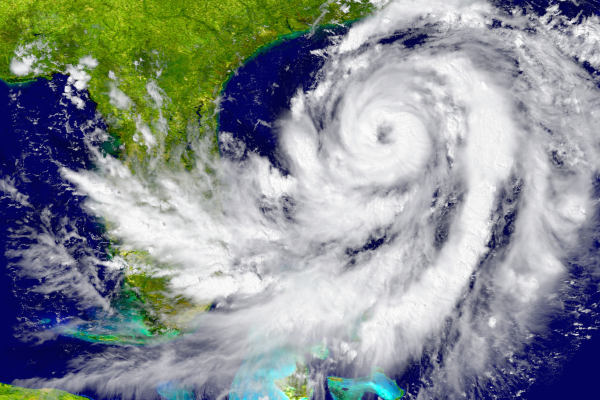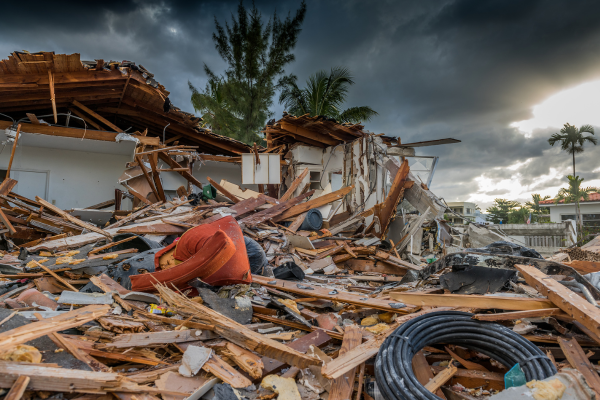Understanding Hurricanes: Formation, Dangers, and Safety Measures – By Nadeeka – eLanka

What is a Hurricane?
A hurricane is a powerful tropical storm that forms over warm ocean waters, typically in the Atlantic Ocean, Gulf of Mexico, or the eastern Pacific Ocean. These storms can reach wind speeds of over 74 mph, earning them classification as a Category 1 hurricane, and they can strengthen to Category 5 storms with winds exceeding 157 mph. Hurricanes are known for their destructive potential, often causing significant damage due to heavy rain, strong winds, storm surges, and flooding.
How Hurricanes Form
Hurricanes form when several key ingredients come together:
- Warm Ocean Water: Sea surface temperatures must be at least 26.5°C (80°F). The heat from the ocean acts as fuel, allowing the storm to gather energy.
- Moisture in the Atmosphere: A high level of humidity in the lower to mid-levels of the atmosphere helps drive the storm’s growth by encouraging condensation and releasing latent heat, which further fuels the storm.
- Low Wind Shear: Low wind shear allows the storm to maintain its structure. High wind shear can tear a developing storm apart.
- Pre-existing Weather Disturbance: A weather system, such as a tropical wave, helps to create the initial disturbance that may develop into a hurricane.
As warm air rises from the ocean surface, it creates a low-pressure area. Cooler air rushes in to replace the warm air, and this process continues, creating a circular wind pattern. When conditions are right, this system intensifies into a hurricane.
Why Hurricanes Are Dangerous
Hurricanes pose multiple threats:
- High Winds: These can topple trees, power lines, and buildings, causing widespread damage and disruption.
- Storm Surges: These occur when hurricane winds push ocean water onto land, resulting in flooding. Storm surges are responsible for a significant number of hurricane-related fatalities.
- Torrential Rainfall: Hurricanes can produce heavy rains that lead to flash floods and landslides. In some cases, areas far inland experience severe flooding even days after the hurricane makes landfall.
- Tornadoes: Hurricanes can spawn tornadoes, which add another layer of danger to these storms, creating localized areas of even greater destruction.

Hurricane Milton Update
As of the latest update, Hurricane Milton is currently tracking through the central Atlantic and has intensified to a Category 3 storm. The storm is projected to make landfall along the U.S. eastern coast, prompting evacuation orders in coastal areas. Meteorologists predict that Milton could strengthen further as it moves over warmer waters, with a potential upgrade to Category 4. Communities in the projected path are being urged to prepare for wind damage, flooding, and life-threatening storm surges.
Officials are urging residents to stay tuned to local weather reports and follow evacuation protocols if ordered. Milton is expected to bring 6-10 inches of rain, with isolated areas seeing even higher amounts. Storm surges of up to 12 feet are anticipated in some coastal regions, which could result in significant coastal flooding.
How to Stay Safe During a Hurricane
- Evacuation Planning: Always follow local authorities’ guidance on evacuation. Prepare an emergency kit with essential items, such as water, non-perishable food, medications, important documents, and flashlights.
- Home Preparation: Secure outdoor furniture, board up windows, and ensure that your roof is reinforced. Bring pets indoors and ensure you have enough food and water for them.
- Stay Informed: Keep up-to-date on the storm’s progress using local news channels, apps, or weather radios. Make sure you are aware of any changes in the storm’s path or intensity.
- Avoid Floodwaters: Floodwater can hide debris and be contaminated with sewage. Always avoid driving through or wading in floodwaters, as they can sweep away vehicles or cause drowning.
- Power Outages: Be prepared for power outages by having batteries, backup chargers, and a generator if possible. Avoid using candles to prevent fire hazards.
Conclusion
Hurricanes are some of the most dangerous natural disasters due to their unpredictable nature and the variety of hazards they bring. Understanding how hurricanes form, recognizing their dangers, and taking appropriate safety measures can significantly reduce risks to life and property.
As Hurricane Milton continues to approach, now is the time to prepare, stay informed, and, if needed, evacuate. By following these precautions, you can help ensure the safety of yourself and your family during the storm.
Stay safe and stay informed.























